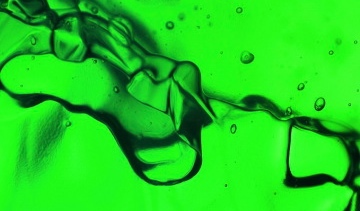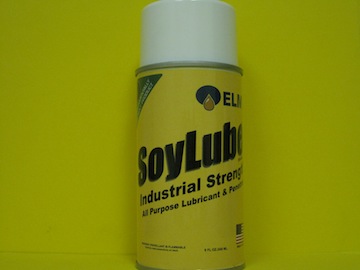Here’s a sector that should make entrepreneurs drool.
A sector that rarely gets highlighted in the press.
To a large extent, visible only to the folks who operate in the sector.
Net Zero by Narsi
Insights and interactions on climate action by Narasimhan Santhanam, Director - EAI
View full playlistBut worth almost a trillion dollars globally.
Yes, you heard me right. A TRILLION DOLLARS. That would be 6,000,000 crores in Rs.
What sector is this?
It is the specialty chemicals sector, which according to estimates is a $800 billion + market worldwide.
EAI’s Consulting Division provides special assistance for entrepreneurs/businesses interested in exploring opportunities in the green and eco- specialty chemicals domain. See here for more.
Just to give you a perspective, the global chemicals market is worth about $4 trillion, and the commodity chemicals is about 80% of this. That leaves 20% for non-commodity, specialty chemicals. (For those looking for a definition and explanation for specialty chemicals, do have a look at this brief report)
The range for industrial specialty chemicals is quite wide, with some prominent sectors given below:
- Agri chemicals
- Construction chemicals
- Lubricants
- Additives – Stabilizers, Plasticizers, Lubricant Additives, Flame Retardants, Anti-oxidants, Corrosion Inhibitors, Biocides, Emusifiers & Surfactants
- Polymers & resins
- Industry specific – chemicals for electronic, textile, oilfield industries…
- Color Pigments & Dyes, Coatings
- Functional Fillers & Extender Pigments – Lightweight aggregates, Flattening agents
Some prominent consumer products specialty chem verticals include
- Personal and health-care – hair care, soaps/detergents, skin care (cosmetics, fragrances), toiletries…
- Household-care – detergents, cleaning chemicals, pest control chemicals
- Food chemicals
- Babycare
- Packaging – Plastics and polymers
There are probably over a hundred distinct application areas for specialty chemicals. What is interesting is that even niche segments among these – chemicals for petroleum and oil extraction for example – are worth over $10 billion individually.
And unlike the commodity chemicals segment (sulphuric acid, benzene, ethanol, glycerine…you get the idea), specialty chemicals command good premiums and profit margins.
These facts alone should make any entrepreneur sit up and take note.
But what is really exciting for entrepreneurs looking for “green opportunities” is that there is significant pressure on this sector to go green and sustainable. Whether it is about specialty chemicals for construction, or for cosmetics, there is a significant movement towards making the supply chain, especially the raw materials, as sustainable and eco-friendly as possible.
Low Hanging Opportunities
Consumer end user segments – In the short term, significant demand for eco-friendly consumer chemicals can be seen for the following sectors, and these will hence be the segments that see early growth:

- Eco cosmetics – deodorants, perfumes, cosmetics
- Eco detergents and Eco cleaning products
- Food ingredients and additives
- Consumer packaging – especially bioplastics
Industrial end user segments – Significant demand for eco-friendly industrial chemicals can be seen for the following sectors in the short and medium term:
- Eco insecticides and eco pesticides
- Biofertilizers and other soil nutrients
- Lubricants, greases and cleaning chemicals
- Pharma ingredients
- Industrial polymers and plastics
- Coatings & paints
- High performance thermoplastics
- Electronics
- Catalysts
- Adhesives and sealants
- Plastics additives
- Construction chemicals
- Display chemicals
- Solvents, surfactants, ionic liquids…
- Bioremediation chemicals and agents – microbial wastewater treatment, bioremediation for toxins such has mercury, PAHs, petroleum based hydrocarbons, phenol derivatives, PCBs, PAEs, pharmaceuticals, biosorption, phytoremediation…
- Bio-catalysts
- Enzymes for diverse applications
The above are just the tip of the iceberg. By 2020, one can expect large sectors of specialty chemicals having significant green components in them. Just imagine a sector that will be worth close to $1 trillion having 20-30% of its value comprising sustainable materials.
That would be a sector worth $250 plus billion opportunity by 2020, from almost nothing right now.
EAI’s Assistance to Entrepreneurs Interested in Green & Eco Chemicals
At EAI, we have been observing this segment for the past two years, and we feel that this sector is close to reaching the tipping point, mainly for the export market, as the demand for eco-specialty chemicals for the short and medium term will be predominantly from the developed countries, especially USA and Europe.
In order to assist those keen on exploring opportunities in this emerging segment, EAI’s specialty consulting division is putting together dedicated resources. To know how we can assist in understanding the opportunities in eco specialty chemicals, have a look at this page.
Eco Chemicals Reference
Prominent global examples products/solutions in eco and sustainable chemicals (and the corresponding companies)
- Chemicals Sector – D-lactic acid (Myriant) , Biofene (Amyris) , Butanediol ( BioAmber, Genomatica) , Adipic acid (Verdezyne), Succinic acid (BioAmber)
- Materials – Farnesene (Amyris/Kuraray), PHA (Metabolix), Isoprene (Amyris, Genencor etc ), PBS (BioAmber)
- Food – Valencene/Nooktatone (Isobionics/DSM, Allylix), Vanillin/resveratrol (Evolva), Vetivone (Allylix), Corn-enzyme (Syngenta/Verenium)
- Fuels – Isobutanol (Gevo) , Algal oils (Solazyme) , Butanol (Butamax/Dupont) , Algal biofuels (Syn.Genom) , Ethanol (Mascoma/Qteros)
Sector Trends
- Personal and home care – GCE, Certified standards/metrics, tools
- Oleochemicals – Biosurfactants, glycolipids APGs
- Coatings – Low VOC, High-solid, water based, UV Cure
- Colorants – Polyfunctional reactive dyes, Conc/liquid dyes, Encapsulated dyes, etc
- Lubricants – Bio lubricants, eco labeling
- Adhesives – Bio adhesives, eco labeling
Opportunities from Unmet Needs
The following some of the immediate unmet needs that have the potential to be satisfied by green specialty chemicals
- Life Sciences – Self healing aids, biomarkers, customized cosmetics, designer CPC
- Transportation – Fuel cells, bioplastics, lightweight polymers, recyclable green tyres, compact batteries
- Infrastructure – Performance coatings, bio-cleaners, asphalt binders, cement additives, adhesives, colorants
- ICT – Sensor networks, recyclable products, energy devices, safer electronic chemicals,
- Energy / Fuels – Designer biomass, eco efficient OFC, bio materials for solar and wind energy systems, Li–Ion batteries
Specific Global Examples of Companies in this Sector
- Daimer, a leading supplier of green chemicals, offers Eco-Green Carpet Care & Upholstery Cleaner, a fast-acting, all-natural, cleaning formula that penetrates stains in carpets and upholstery using cutting edge green chemistry. This environmentally-safe, non-toxic, formula encapsulates dirt and crystallizes when dry to prevent left-over residue from re-soiling treated areas. The encapsulated soil and residue can easily be vacuumed.
- GEMTEK® Products is a manufacturer of non-toxic, environmentally-safe cleaners, degreasers, solvents,lubricants, and specialty chemical products that are derived from renewable, biobased resources for a broad range of industrial applications.
- Elevance – Elevance employs Nobel-prize-winning catalyst technology to break down natural oils and recombine the fragments into novel, high-performance green chemicals. These chemicals combine the benefits of both petrochemicals and biobased chemicals. The technology consumes significantly less energy and reduces greenhouse gas emissions by 50 percent compared to petrochemical technologies. Elevance is producing specialty chemicals for many uses, such as highly concentrated cold-water detergents that provide better cleaning with reduced energy costs. Specific markets that Elevance focusses on include: Performance waxes, Personal care products, Detergents and cleaners & Antimicrobials
- How green chemistry was used by Nike – Nike designed and implemented a more environmentally-friendly rubber for its footwear created with benign accelerators, vegetable oils, and modified processing chemicals and methods without compromising performance. Partnerships with manufacturers in their supply chain allowed Nike to address process changes required by the new rubber formula collaboratively.
- How green chemistry was used by Columbia Forest Products: After listening to an expert speak about how mussels adhered to rocks despite being repeatedly pounded by waves, a top executive from Columbia replicated this in a commercial setting as a pioneering adhesive for hardwood plywood and other panel products through the use of soy protein. The end result was an adhesive that was stronger, resistant to moisture–an advantage over urea formaldehyde adhesives–and completely environmentally benign, even compostable. Three years later in 2005, Columbia Forest Products announced the conversion of its entire manufacturing operation to this formaldehyde-free.
- Green Chemistry Innovation Case Study: Neil Kelly Cabinets – A prominent company known for its industrial eco-friendly cabinets, Neil Kelly Cabinets is finding a passionate client base that shares this vision for smart, green building. One of the challenges they’ve overcome is finding high quality, cost competitive alternatives to materials that contain toxic chemicals. The “casework” or main body of traditional cabinetry can contain formaldehyde, contaminating indoor spaces and leading to prolonged exposure in humans that has been proven to cause asthma and even cancer. At first Neil Kelly Cabinets tried building with a substitute made from agricultural byproducts, but it was discontinued due to quality issues. Widely used alternatives contained toxic chemicals such diisocyanates and formaldehyde. Forgoing these options, Smitty convinced his suppliers to make the casework components using a new, formaldehyde-free adhesive called PureBond, an exceedingly safer alternative. The company also chooses glues, wood veneers, adhesives and finishes that are manufactured with safety in mind.
- Green Chemistry Innovation Case Study: Alima Pure – When it comes to makeup, the potential hazards extend far beyond what the eye can see. As the owner of Alima Pure, Kate O’Brien manufacturers ultra pure pigments for the face, cheeks, eyes and lips that are safe and affordable. Created in 2004, Alima Pure has grown into a 2,500-square foot manufacturing facility in Portland with 10 employees and an ever-expanding customer fan base. In certain types of large-scale cosmetics, pigments are mixed with chemical additives like oils, emulsifiers and fillers that can be harmful on their own, yet also require preservatives to avoid spoilage. These preservatives often contain formaldehyde and compounds that form nitrosamines, both of which have been linked to Cancer. , Considering the average teen uses 15-25 cosmetic products daily, our exposure to these chemicals over a prolonged period can have grave effects on our health and well-being.
- Green Chemistry Innovation Case Study: Yolo Colorhouse – Virginia Young and Janie Lowe are painters with an innate eye for color and design. But it was the pair’s desire for safer, less toxic paints that made them entrepreneurs. Formed in 2005, their self-proclaimed “indie” Yolo Colorhouse paint company strives for a “more colorful and less volatile” world, with ten employees producing paint that is both eye-popping and environmentally responsible. Virginia and Janie started looking for healthier paint options after experiencing headaches and sore throats using existing paints having volatile organic compounds (VOCs). Frustrated by the lack of safe alternatives on the market, they partnered with a university researcher and toxicity consultant to develop their own prototype. Today, Yolo Colorhouse is fully committed to green chemistry practices that ensure its products are free from VOCs and harmful chemicals like carcinogens and formaldehyde from the very beginning of the manufacturing process. Like other “green” products, non-toxic paints represent a relatively small share of the market. Janie and Virginia believe that increasing consumer awareness about indoor air quality and the health impacts of toxic chemical exposure are crucial towards strengthening demand for safer, more effective paint products.
- Vertichem is an innovative green specialty chemical company with patented technology that converts low-cost lignin from the pulp and paper mills into high value green chemical products. Vanillin, Acetovanillone and Vanillic Acid.
- Vanillin – Major application in the flavors and fragrances industry.
- Acetovanillone – Commonly used as a flavourings agent and as a starting substance in major pharmaceutical applications.
- Vanillic Acid – Popular flavourings and scent agent for its pleasant creamy odor. Secondary applications in pharmaceuticals for production of drugs in major therapeutic areas.
- Vertellus is a specialty chemicals company focused on the manufacture of ingredients used in pharmaceuticals, personal care, nutrition, agriculture, and a host of other market areas affected by trends favoring “green” technologies and chemistries. Vertellus is the #1 global producer of pyridine and picolines, specialty pyridine derivatives, DEET, castor oil derivatives and systems, and citrate polymer additives and systems, and a world leader in Vitamin B-3.
- Greenseal Chem based in Belgium makes green materials based emulsifying agents, rheology modifiers, extenders, flame retardants for PU Foams, fillers & plasticizers from rapeseed, castor oil and soybean oil, coatings for building materials, thermoshield fire protection coating, crack resistant, water dispersed anti corrosive protection coating and related products.
- Elevance – produces novel specialty chemicals including multifunctional esters such as 9-decenoic methyl ester; a unique distribution of alpha and internal olefins including decene; and a mixture of oleochemicals but more C16 than C18 chains. Its high-value, di-functional specialty chemicals have superior functional attributes previously unavailable commercially as it combine the functional attributes of an olefin (typical of petrochemicals) and monofunctional ester or acid (typical of oleochemicals) into a single molecule. It claims to be the only company that can economically produce these di-functional molecules (using their metathesis technology) as conventional producers have to blend and formulate a number of separate ingredients to produce materials with the same functional attributes of both olefins and esters.
- Ecover, the European cleaning products company that promote plant-based ingredients. In 2012, it merged with another eco-conscious cleaning products company, Method, based in the US.
- A dedicated green chemicals researcher – Doris de Guzman and her interesting Green Chemicals Blog
Green Chemistry R&D Framework
Areas in the research and development of green chemistry have been identified as follows by Tundo et al. (2000):
- Use of alternative feedstocks: Use of feedstocks that are both renewable, rather than depleting, and less toxic to human health and the environment.
- Use of innocuous reagents: Use of reagents that are inherently less hazardous and are catalytic whenever feasible.
- Employing natural processes: Use of biosynthesis, biocatalysis, and biotechbased chemical transformations for efficiency and selectivity.
- Use of alternative solvents: Design and utilization of solvents that have reduced potential for detriment to the environment and serve as alternatives to currently used volatile organic solvents, chlorinated solvents, and solvents that damage the natural environment.
- Design of safer chemicals: Use of molecular structure design—and consideration of the principles of toxicity and mechanism of action—to minimize the intrinsic toxicity of the product while maintaining its efficacy of function.
- Developing alternative reaction conditions: Design of reaction conditions that increase the selectivity of the product and allow for dematerialization of the product separation process.
- Minimizing energy consumption: Design of chemical transformations that reduce the required energy input in terms of both mechanical and thermal inputs and the associated environmental impacts of excessive energy usage.





 Our specialty focus areas include
Our specialty focus areas include




 India Big Business Opportunities in Climate Tech – List – EAI
India Big Business Opportunities in Climate Tech – List – EAI

